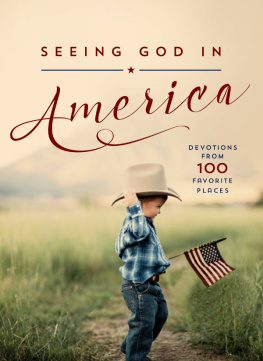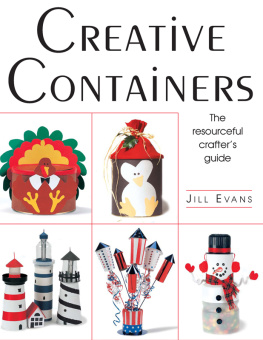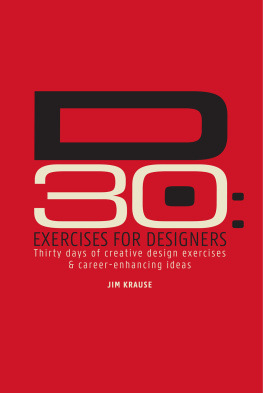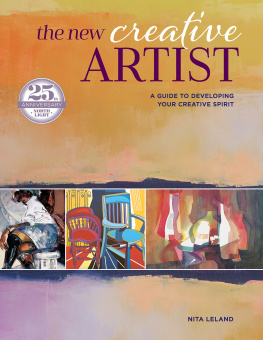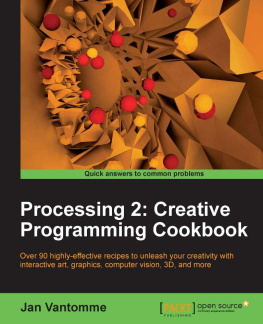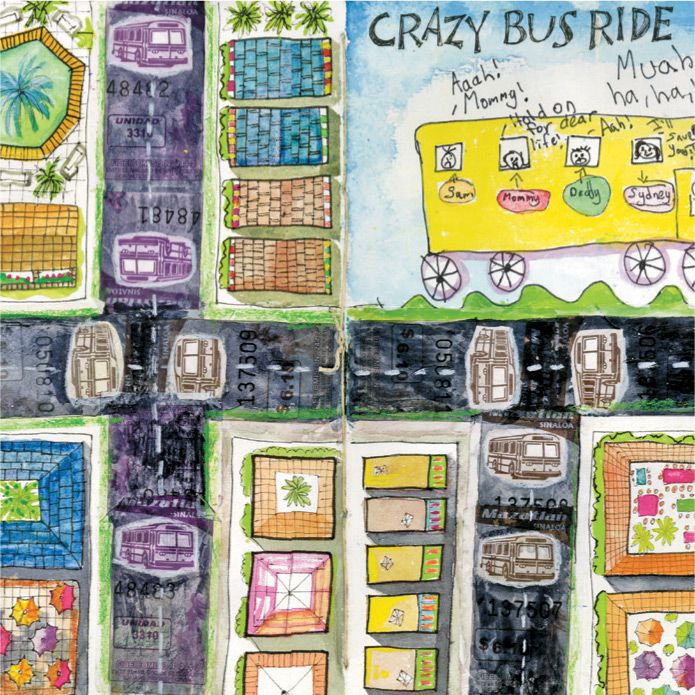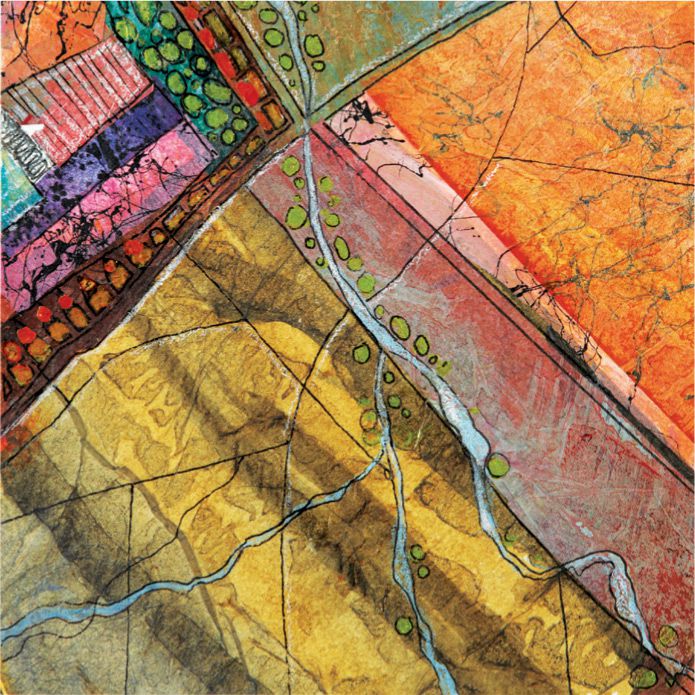2014 by Quarry Books
Text and Artwork 2014 Jill K. Berry & Linden McNeilly, unless otherwise noted
Photography 2014 Jill K. Berry
All rights reserved. No part of this book may be reproduced in any form without written permission of the copyright owners. However, the publisher grants permission for the purchaser of this book to copy the patterns for personal use. All images in this book have been reproduced with the knowledge and prior consent of the artists concerned, and no responsibility is accepted by the producer, publisher, or printer for any infringement of copyright or otherwise, arising from the contents of this publication. Every effort has been made to ensure that credits accurately comply with information supplied. We apologize for any inaccuracies that may have occurred and will resolve inaccurate or missing information in a subsequent reprinting of the book.
First published in the United States of America by
Quarry Books, a member of
Quayside Publishing Group
100 Cummings Center
Suite 406-L
Beverly, Massachusetts 01915-6101
Telephone: (978) 282-9590
Fax: (978) 283-2742
www.quarrybooks.com
Visit www.Craftside.Typepad.com for a behind-the-scenes peek at our crafty world!
Digital edition: 978-1-62788-031-2
Softcover edition: 978-1-59253-905-5
Library of Congress Cataloging-in-Publication Data
Berry, Jill K., author.
Map art exciting art explorations in map making, imagination, and travel / Jill K. Berry, Linden McNeilly.
pages cm. -- (Lab series)
ISBN 978-1-59253-905-5 (paperback)
1. Maps in art. 2. Map drawing--Technique. 3. Cartography in art. I. McNeilly, Linden, author. II. Title.
N8222.M375B47 2014
526--dc23
2013038950
Digital edition published in 2014
10 9 8 7 6 5 4 3 2 1
Design: Leigh Ring // Ring Art + Design // www.ringartdesign.com
Cover Image: Jill K. Berry
Image on page courtesy of the Australian National Maritime Museum.
Images on pages courtesy of Peter Clark and The Rebecca Hossack Gallery.
52 EXCITING ART EXPLORATIONS IN MAPMAKING, IMAGINATION, AND TRAVEL
Jill K. Berry & Linden McNeilly

CONTENTS
INTRODUCTION
Strange lands, wild creatures, and the promise of adventure have beguiled map lovers for many centuries. Maps are spectacular pictorial evidence of the exploration and curiosity of artists, navigators, explorers, and pirates throughout history. Why not add fun and continue the tradition in new and inventive ways?
Most of us consider maps to be pretty serious and truthful business, more science than art. In school when the teacher pulled out a map, we believed the information on it was pure history and fact. The truth is, many historical maps are fiction posing as fact, and are artful rather than scientific. Mapmakers wanted to tell stories of adventure and discovery, and those stories were just as stories are meant to be: often tall tales that hardly resemble the absolute truth. Mapmakers rarely had the experience they needed to be certain of all the details on their maps, so they listened to others, read books, researched at their local libraries, and then set to making their art. There was no Internet or fact-checking to challenge them. Sometimes they made mistakes on maps by accident. Other times the maps they made were purposefully false: They wanted to lead the competition in the opposite direction, or convince someone of something for selfish gain.
Those of us who want to be called mapmakers come from a long line of people who were inventive, creative, skilledliars, thieves, and pirates. Even now, they leave us to interpret stories filled with wonder and beauty. They left us the tradition of making our own stories by way of maps. Making maps is a joy, both because maps are beautiful to look at and because they lead us through our histories and dreams in a way that no other art form really can.
THIS BOOK IS AN INVITATION
We cant resist making maps. Cave painters tens of thousands of years ago left record of the patterns of stars and the paths of arrows seeking game. Humans in many cultures have continually made maps from ancient times to modern timesit is an age-old craft for the curious.
Even though the earth, the sky, every continent, and every sea on this planet has been mapped, we continue to make maps. Why? Because making maps is a way of understanding. We make maps to sort out the physical world, to see its size, shape, color, and texture. We make personal maps to share our experiences and travels, relationships, and ideas. Our historical maps help us understand the past. Most of all, maps help us find our place in the world.
There is a wealth of books on cartography, geography, and mapmaking, and beautiful books of maps as art, filled with professional renditions of cartographic wonders.
This book is an invitation, a portal, a bridge between those two kinds of books. We want to entice map lovers to become mapmakers, to enjoy the supreme pleasure of making maps as a tool for self-discovery, art-making, storytelling, and recording your dreams and memories.
Funny
Quirky
Dimensional
Artful
Maps can take many shapes. They can be concrete or abstract, three-dimensional or absolutely flat.
We hope to show you that map-making is also easy, fun, and satisfying. We hope to convert you into an arty cartophile.
WHO SHOULD USE THIS BOOK?
This book is for individuals, teachers, and groups of all ages. If you are a curious explorer who likes to visually record your wanderings, you can be a mapmaker. If you are a storyteller looking for new ways to communicate your stories, you can be a mapmaker. If you are curious about yourself, you might find a huge amount of fun and satisfaction in making maps.
Individuals can use this book in many ways. These projects were designed to present new artistic skills in a fun, easy way while allowing you to express yourself through the lens of a map. You can use these techniques in projects of all kinds: bookmaking, working in journals, schoolwork, or any other project calling for multimedia artwork. Youll learn more about what makes a map and then break all the rules when you make your own. Youll delve into areas you hadnt thought possible to map and come away with an increased understanding for and a deeper connection with what matters.
Teachers can use this book to design lessons that teach skills related to maps, artistic ways to understand maps, and creative ways to organize information from stories, history, and science. Maps can be the perfect palette for self-reflection, allowing you to examine relationships and demonstrate knowledge. Plus, the materials are fun to work withstudents of all ages will love them!


